#SOF (Special Operations Forces)
Explore tagged Tumblr posts
Text
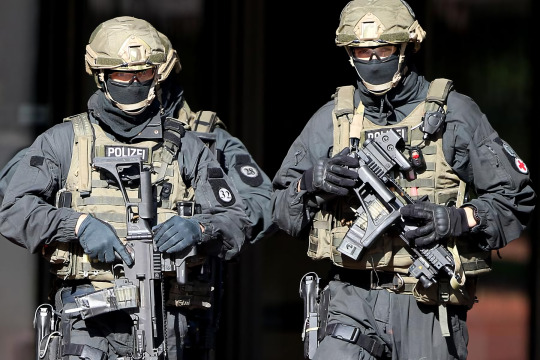
#military#tactical#special forces#spec ops#special operations#SOF#germany#polizei#masked#operator#soldiers
39 notes
·
View notes
Text
What are your key takeaways on Indian Para SF capabilities and surgical strikes? Share your thoughts in the comments below!

View On WordPress
#2016 LoC Strikes#Counter Terrorism#Garud Commando Force#India Pakistan Relations#Indian Army#Indian Para SF Surgical Strikes#MARCOS#Military Doctrine#national security#NSG#Para Special Forces#SOF#Special Operations Forces#Surgical Strike#Uri Attack
0 notes
Text
US Joint Special Operations Command (USJSOC) and Army Special Operations Command (USASOC) maintain historian offices. There are indeed special forces historians. While this brings to mind the hilarious mental image of a revwar continental army soldier with NVGs, it’s usually some old dude with extremely high security clearances. The thing is, like, 99% of everything these historians do is classified. They’re handling the day to day archival of SOF unit work and operations, for the most part. Personally I think it’s funny as fuck. Guys who are in the entire profession known for going through dirty laundry, reading the gossip of dead people, and everything they do, everything they handle, is covered in black ink and buried for decades. Every single thing they handle will be classified for decades. They probably won’t be alive for when the first record they handled is declassified and given to the public
88 notes
·
View notes
Text
Since the onset of Russia’s full-scale invasion in 2022, much has been written about the extensive training provided to the Ukrainian military by the country’s Western partners. However, the West also has much to learn from Ukraine’s unique military experience. In particular, the successes of Ukraine’s Special Operations Forces provide a range of valuable lessons for their Western counterparts that will shape military doctrines for years to come.
The effectiveness of Ukraine’s Special Operations Forces can be largely attributed to their exceptional adaptability in rapidly changing battlefield conditions. When Russia launched its full-scale invasion in February 2022, Ukrainian SOF units quickly adjusted to meet the immediate challenges of high-intensity conflict against a far larger and better armed enemy.
This adaptability has manifested in several crucial ways. The rapid reconfiguration of small unit tactics to counter Russian mechanized forces has been particularly noteworthy, as has the development of innovative solutions to overcome numerical disadvantages. Ukrainian SOF units have consistently shown their ability to adopt new technologies and tactics based on battlefield feedback. Perhaps most importantly, they have implemented flexible command structures that enable decentralized decision-making, allowing for rapid responses to emerging threats and opportunities.
Ukraine’s ability to adapt has been further demonstrated through the innovative use of civilian infrastructure and technologies. Ukrainian SOF units have effectively incorporated commercial drones, civilian communications networks, and other non-military technologies, showing remarkable creativity in overcoming resource constraints.
One of the most significant lessons from the conflict has been the effective integration of SOF units with conventional military forces engaged in large-scale combat operations. Ukrainian SOF units also played a vital role in preparing the battlefield before and during the initial phases of the invasion. They established networks of resistance, gathered intelligence, and identified key targets that would later prove crucial for conventional forces.
Ukraine’s achievements since 2022 have owed much to years of solid preparations. Following Russia’s occupation of Crimea in 2014, Ukrainian Special Operations Forces underwent significant transformation with assistance from NATO countries, particularly the United States, United Kingdom, and Canada. Between 2015 and 2021, Ukraine also implemented major structural reforms to align with NATO standards, including the establishment of dedicated SOF training centers.
These steps helped lay the foundations for a sophisticated network of resistance capabilities across potential invasion routes by early 2022. Ukrainian SOF units mapped key infrastructure, identified potential targets, and established relationships with local civilian networks, while developing protocols for rapid information sharing between SOF units, conventional forces, and civilian resistance elements. These preparations proved vital, enabling Ukrainian forces to target Russian supply lines, command nodes, and communications systems using real-time intelligence.
Throughout the invasion, coordination between Ukrainian SOF units and conventional forces has enabled effective combined arms operations. SOF units frequently act as forward observers, providing targeting data to artillery units and conducting battle damage assessments. The ability to rapidly share intelligence has been particularly important in urban environments, where the complexity of the battlefield requires close cooperation between different military elements.
Russia’s invasion has reinforced the importance of unconventional warfare in modern conflicts. Ukrainian SOF units have successfully employed various unconventional warfare techniques that have had strategic impacts far beyond their tactical execution.
Ukraine’s implementation of guerrilla tactics and sabotage alongside partisans has been highly effective, with numerous successful operations conducted behind enemy lines. This has included the disruption of Russian supply lines, targeting of key military infrastructure and command centers, and the execution of precision strikes on high-value targets.
The psychological aspect of warfare has proven equally important, with Ukrainian SOF units making significant contributions to information warfare campaigns that have influenced both domestic and international audiences. They have conducted deception operations that have complicated Russian planning and operations, while also executing morale operations targeting both enemy forces and occupied populations.
The successful integration of modern technology has been a key characteristic of Ukrainian SOF operations. Despite facing a far wealthier and numerically superior adversary, Ukrainian SOF units have leveraged various technological capabilities to maintain operational effectiveness. They have utilized commercial technologies for reconnaissance and surveillance, integrated drone operations into tactical planning and execution, and leveraged artificial intelligence and big data analytics for targeting and planning.
Ukraine’s SOF operations provide several critical lessons for the country’s Western partners. In terms of doctrine development, it is clear that military organizations must emphasize flexibility and adaptability in force structure and training, while integrating SOF capabilities more deeply in support of conventional forces.
The importance of technological integration and adaptation cannot be overstated. Future military forces must be prepared to operate in environments where commercial technology plays an increasingly important role, and where the ability to utilize these technologies can provide crucial advantages. In terms of equipment, Western planners should focus on communications jamming and interception, improved surveillance and reconnaissance capabilities, and integrating AI tools to aid in intelligence collection and analysis.
The role of Ukrainian SOF operations in the current war provides valuable insights for military forces worldwide. Their impact demonstrates the critical importance of adaptability and the effective use of technology in modern warfare. These lessons are particularly relevant as military organizations prepare for future high-intensity conflicts in increasingly complex operational environments.
10 notes
·
View notes
Text

Soldier of the Special Operations Forces - SOF (Сили Спеціальних Операцій - ССО) of Ukraine with an electronic warfare system for controlling FPV (first person view) drones.
This is not cosplay. This is from the front lines of an actual war happening right now in Europe.
#ukraine#ukrainian tumblr#russian invasion#russia is a terrorist state#drones#drone#fpv drone#sci fi#cyber punk#electronic warfare#metal gear solid
17 notes
·
View notes
Text

According to local sources, Ukrainian Special Operations Forces now use ENVG-B advanced augmented reality headsets.
The ENVG-B (Enhanced Night Vision Goggle-Binocular), produced by L3Harris, has become a game-changer for Ukraine’s Special Operations Forces (SOF), offering unprecedented situational awareness and target acquisition.
8 notes
·
View notes
Text
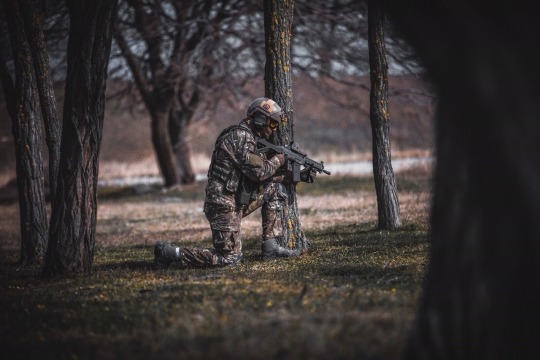
A Romanian special forces soldier pulls security during a special operations air-land integrations (SOALI) exercise with US and Polish SOF near Constanta, Romania.
SIRP / SMAp, March 3, 2020
5 notes
·
View notes
Note
What are your favorite Special Forces groups/units? (I remember you answered an ask and you talked about the SAS guy so I wanted to ask)
This is one of the best questions I’ve received recently. Researching the history of SOF units, both domestic and foreign, has been a hobby of mine for years.
No specific order. The units in this list operate at a ridiculously high level, and are equally capable of carrying out the most dangerous and secretive counter-terrorism and hostage rescue operations. But in terms of history, and overall set mission goals, these are my favorites.
1. United Kingdom: Special Air Service (SAS)

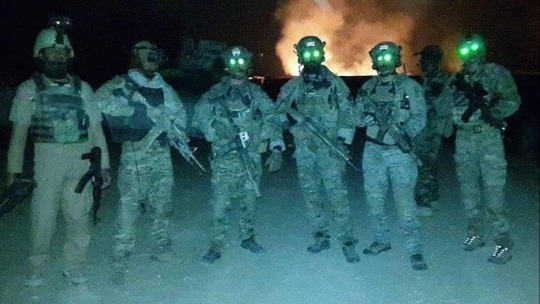
2. United States: Combat Applications Group (DELTA FORCE)
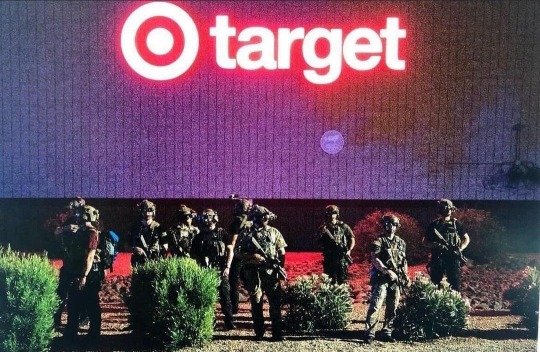
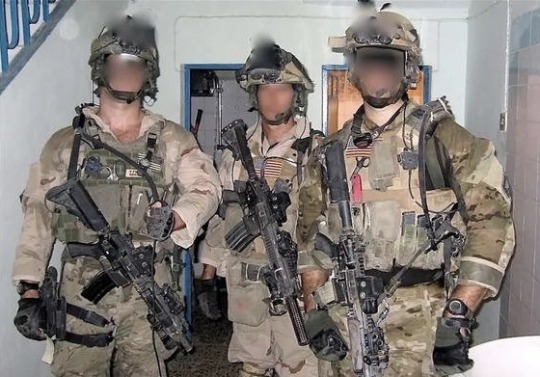
3. Poland: JW GROM (Military Unit No. 2305)


4. United States: Naval Special Warfare Development Group, or SEAL Team 6 (DEVGRU)

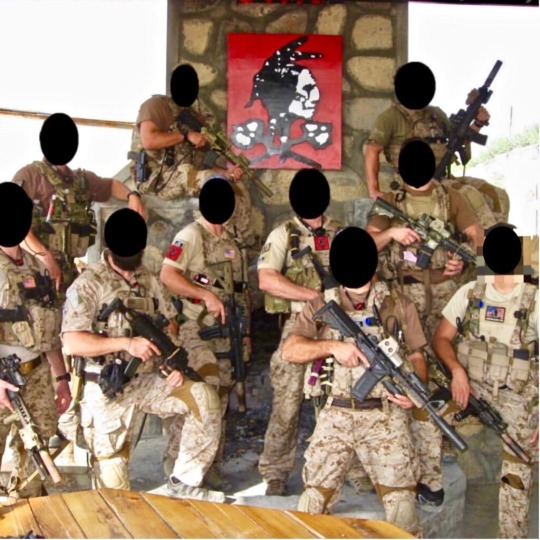
5. United States: Regimental Reconnaissance Company (RRC/JSOC Army Rangers)


8 notes
·
View notes
Text


BIOGRAPHICAL INFORMATION.
name: "Lycan"
nicknames: ذئب (by Farah Karim); Perra (by Valeria Garza).
species: lycanthrope.
rank: sergeant.
age: thirty.
occupation: SOF (Special Operations Force) K-9 OPERATOR / MPC (Multi-Purpose Canine) and CAD (Combat Assault Dog) OPERATOR.
build: tall (180cm) and toned.
eyes: amber (orange/yellow) eyes.
hair: long brown hair.
faceclaim: Lara Croft.
! To get to know her better.
#cod#callofduty#callofdutyoc#codrp#codoc#lycan#original character#oc#cod mw2#cod modern warfare#military rp#military
10 notes
·
View notes
Text
The Pentagon Wants to Use AI to Create Deepfake Internet Users
The Department of Defense wants technology so it can fabricate online personas that are indistinguishable from real people.
The United States’ secretive Special Operations Command is looking for companies to help create deepfake internet users so convincing that neither humans nor computers will be able to detect they are fake, according to a procurement document reviewed by The Intercept. The plan, mentioned in a new 76-page wish list by the Department of Defense’s Joint Special Operations Command, or JSOC, outlines advanced technologies desired for country’s most elite, clandestine military efforts. “Special Operations Forces (SOF) are interested in technologies that can generate convincing online personas for use on social media platforms, social networking sites, and other online content,” the entry reads. The document specifies that JSOC wants the ability to create online user profiles that “appear to be a unique individual that is recognizable as human but does not exist in the real world,” with each featuring “multiple expressions” and “Government Identification quality photos.”
[...]
The Pentagon has already been caught using phony social media users to further its interests in recent years. In 2022, Meta and Twitter removed a propaganda network using faked accounts operated by U.S. Central Command, including some with profile pictures generated with methods similar to those outlined by JSOC. A 2024 Reuters investigation revealed a Special Operations Command campaign using fake social media users aimed at undermining foreign confidence in China’s Covid vaccine.
[...]
This more detailed procurement listing shows that the United States pursues the exact same technologies and techniques it condemns in the hands of geopolitical foes. National security officials have long described the state-backed use of deepfakes as an urgent threat — that is, if they are being done by another country.
[...]
The offensive use of this technology by the U.S. would, naturally, spur its proliferation and normalize it as a tool for all governments. “What’s notable about this technology is that it is purely of a deceptive nature,” said Heidy Khlaaf, chief AI scientist at the AI Now Institute. “There are no legitimate use cases besides deception, and it is concerning to see the U.S. military lean into a use of a technology they have themselves warned against. This will only embolden other militaries or adversaries to do the same, leading to a society where it is increasingly difficult to ascertain truth from fiction and muddling the geopolitical sphere.”
4 notes
·
View notes
Text
SOCOM

Exceptional Tasks Order (SOCOM) assumes a basic part in defending public safety and safeguarding the interests of the US.As the world evolves, so do the challenges faced by Special Operations Forces (SOF). To address these challenges effectively, SOCOM recognizes the pivotal role of technology and innovation in enhancing their capabilities and achieving mission success. Technology and innovation have become indispensable for Special Operations Command (SOCOM) to enhance its operational capabilities and achieve mission success. By leveraging cutting-edge technology, SOCOM can overcome challenges, provide its personnel with the best equipment and gear, and empower them to adapt to rapidly changing environments. As both adversaries and technology continue to evolve, SOCOM must foster a culture of innovation, invest in research and development, and forge partnerships with industry and academia to remain at the forefront of technological advancements in the realm of special operations.
2 notes
·
View notes
Video
youtube
AUC3I - Daily Briefing 06-27-2025 On the WAR in Ukraine
Understanding The War In Europe _ Analyzing the situation on the ground with by way of an introduction, 3 points, and a conclusion #militaryoperations #modernwarfare #blackops
COMBAT BRIEFING NUMBER 1220 — 27 JUN 2025
Situation Overview During the night of 26–27 June, Russian forces executed a massed strike with long-range, air-launched precision weapons—most notably the *Kinzhal* hypersonic system—and UAV swarms against a Ukrainian military-airfield complex. That attack capped a week (21–27 June) of six separate precision-strike waves targeting defense-industrial plants, port and fuel infrastructure, AD radar nodes, UAV depots, and temporary garrisons housing Ukrainian troops and foreign volunteers.
Front-Line Operations
North Group (Sumy/Kharkiv) – Air, UAV, and artillery fires hit five mechanised, three airborne-assault, one Jaeger brigade, four assault regiments, two territorial brigades, and the elite “Khimera” SOF detachment. Further south, one mechanised, two motor-rifle, four territorial brigades, plus a National Guard unit took heavy losses. Weekly Ukrainian toll: ≈1 355 KIA/WIA, 16 AFVs, 45 vehicles, 39 artillery pieces, two EW sites, ten ammo depots.
West Group (Kharkiv axis) – Offensive actions liberated Novaya Kruglyakovka and Petrovskoye. Four mechanised/assault brigades, two territorial brigades, a National Guard brigade, and border detachments were routed. Claimed Ukrainian losses: >1 410 personnel, two tanks, eight AFVs (incl. US HMMWV, M113, Turkish Cobra II), 68 vehicles, eight guns, 17 EW stations, 26 depots.
Southern Group (Donetsk) – Capture of Dyleevka drove a wedge into Ukrainian defensive belts. Six manoeuvre brigades, two territorial brigades, a National Guard unit, and the Azov SOF brigade were hit; ≈1 190 casualties reported along with a tank, five AFVs, 26 cars, 15 guns, four EW stations, 15 depots.
Center Group (Donetsk/Dnipropetrovsk) – Continued push secured Novosergeevka. Eight mechanised, four assault/air-assault, one mountain, a UAV brigade, three marine brigades, two National Guard brigades, and the “Khizhak” police brigade suffered up to 3 295 casualties, a tank, 29 AFVs (incl. Bradleys), 42 vehicles, 23 guns destroyed.
East Group (Donetsk south) – Deep advances liberated Zaporizhia, Perebudova, Shevchenko, and Yalta. Two mechanised brigades, an assault regiment, a UAV regiment, a marine brigade, and two territorial brigades lost >1 360 personnel, two tanks, 12 AFVs, 38 vehicles, 15 guns, three EW sites.
Dnepr Group (Kherson/Zaporizhia line) – Pressure on river-line and coastal defenses inflicted ≈520 casualties, an AFV, 58 vehicles, eight guns, 23 EW/counter-battery assets, and 18 supply points.
Air & Missile Defense Russian AD intercepted 32 JDAM glide bombs, two HIMARS rockets, one *Neptune* cruise missile, and 1 221 Ukrainian UAVs over the week.
Cumulative Totals (24 Feb 22–27 Jun 25) Destroyed: 663 aircraft, 283 helicopters, 65 806 UAVs, 612 SAM systems, 24 059 tanks/AFVs, 1 572 MLRS, 26 656 artillery/mortars, 37 365 special vehicles.
Operational Analysis & Implications Moscow’s week-long tempo couples deep-strike interdiction with multi-axis ground pressure, forcing Kyiv to defend critical infrastructure while absorbing sustained frontline attrition. Liberation of Novosergeevka, Dyleevka, and four southern towns tightens the ring around Ukrainian logistics arteries feeding the Donetsk sector, while gains near Kupyansk extend the buffer north of the Oskil River. Reported casualty ratios—over 9 000 Ukrainian losses across six fronts—signal an escalating depletion of Ukraine’s trained manpower and a heavier reliance on territorials and National Guard units. Destruction of 17 EW stations and interception of JDAM/HIMARS rounds underscores Russia’s priority on counter-ISR and counter-battery dominance, potentially widening windows for armour thrusts before autumn rains. Kyiv must stabilise Sumy and Kharkiv to prevent envelopment of eastern reserves and secure alternate supply corridors via Poltava or risk cascading front-line collapses.
#FrontlineUpdates #MilitaryAnalysis #RussiaUkraineWar #Donetsk #Kharkiv #Sumy #Zaporizhzhia #PrecisionStrike #OperationalBriefing #June2025
0 notes
Text

“The Special Operations Forces represent courage, endurance, and a deep understanding that freedom must be protected.” ~ @mfa_ukraine 🇺🇦👏💙💛🙏🇺🇦
#Repost @mfa_ukraine with @use.repost_ . . . Today, Ukraine celebrates the Day of the Special Operations Forces on May 27 – a date that traces back to the 2014 liberation of the new terminal of Donetsk Airport.
This day honours the warriors who are rightfully called “professionals of the impossible” – and they prove it daily. The Special Operations Forces represent courage, endurance, and a deep understanding that freedom must be protected.
Glory to SOF! Glory to Ukraine! 🇺🇦
📸 Photo: @3rd_regiment_uasof
19h
#ukraine#dayofspecialoperationsforces#sof#sofukraine#celebration#honoringwarriors#professionalsoftheimpossible#courage#endurance#protectionoffreedom#ukrainianheroes#gratitude#mfaukraine#mfa_ukraine#armukrainenow#peacethroughstrength#standwithukraine#supportukraine#untilvictory
0 notes
Text
0 notes
Text
Ukrainian Drone Blows Apart Russian Ka52 Helicopter on Russian Soil (Video)
a drone strike by Ukraine’s Special Operations Forces (SOF) brought down a Russian Ka52 attack helicopter in Russia’s border region of Kursk. The bold operation was confirmed in footage shared by the SOF through their Telegram channel on Friday. The drone, a First Person View (FPV) model fitted with explosive munitions, successfully targeted and hit the helicopter, resulting in a visible…
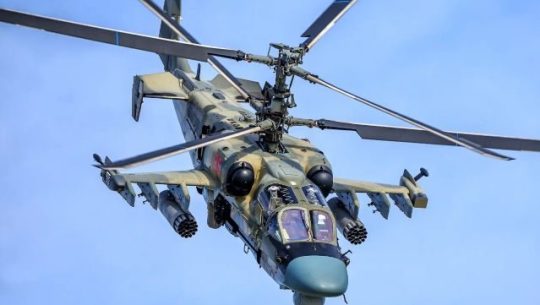
View On WordPress
0 notes
Text
More data, comms, countermeasures needed for Special Ops aircraft
TAMPA, Fla. – Special operators are looking to industry for a suite of upgrades to their fixed-wing aircraft, such as radio frequency countermeasures, new methods for aerial refueling and improved networking. At the annual Global SOF Foundation Special Operations Forces Week, Special Operations Command officials who develop aircraft shared these and other updates that are needed from its largest…
0 notes